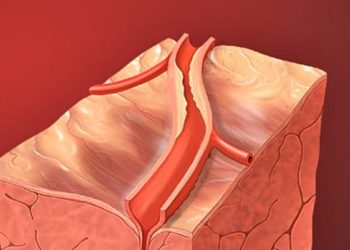2 Minute Medicine Rewind July 15 – July 21, 2014
In this section, we highlight the key high-impact studies, updates, and analyses published in medicine during the past week.
Effects of Extended-Release Niacin with Laropiprant in High-Risk Patients
Despite lack of evidence of overall benefit, niacin has been increasingly used to help lower LDL cholesterol and raise HDL cholesterol, modifiable risk factors for cardiovascular disease. In this randomized, double-blind, multicenter trial, 25,673 European and Chinese patients with vascular disease were assigned to receive extended-release niacin and laropiprant (a prostaglandin D2 receptor antagonist that reduces flushing symptoms in many people taking niacin) or placebo to study the effect on incidence of major vascular events. During 4 years of follow-up, the study group had no reduction in vascular events compared to the placebo group (13.2% vs 13.7%, rate ratio 0.96, 95%CI 0.90-1.03). The niacin-laropiprant group had 9% more deaths from any cause, relatively, than the placebo group, though this difference was nonsignificant (6.2% vs 5.7%, rate ratio 1.09, 95%CI 0.99-1.21). In addition, participants assigned to niacin-laropiprant experienced significantly more adverse events (55.6% vs 52.7% of the control group, p<.001), particularly related to diabetes control, serious infections, and bleeding events. The lack of demonstrated benefit in preventing vascular events and greater incidence of serious side effects is consistent with prior smaller studies of niacin therapy.
Self-testing for HIV is an accurate and socially acceptable method for HIV testing in Malawi and elsewhere, however it is unknown whether earlier diagnosis via self-testing translates into greater initiation of antiretroviral therapy (ART). In this cluster-randomized trial, 14 community health worker areas that received access to home HIV self-testing (as part of a parent study) were assigned to optional home initiation of ART or facility-based care for participants who self-reported a positive HIV test result. The primary outcome was the proportion of adult residents initiating ART within 6 months. Significantly more residents (RR 2.94, 95%CI 2.1-4.1) initiated ART in areas where home initiation of HIV care was available (181/8194 or 2.2%) compared to areas where only facility-based care was available (63/8466 or 0.7%). A majority (64%) of the optional home care group chose to initiate ART at home. The home- and facility-based care groups did not have significantly different rates of attrition after 6 months (28.7% vs 23.8% respectively, adjusted IRR 1.18, 95%CI 0.67-2.10). Though the total number of ART initiators in this study was small, it suggests that the availability of home-based HIV care may increase the number of people who initiate antiretroviral therapy.
Assessment of Second-Line Antiretroviral Regimens for HIV Therapy in Africa
Nucleoside reverse transcriptase inhibitors (NRTIs) and non-NRTIs (NNRTIs) are used for first-line therapy for HIV, but have significant side effects. Their benefit in second-line therapy is unclear. In this open-label, randomized trial, 1277 HIV-positive patients who had first-line treatment failure were assigned to receive a ritonavir-boosted protease inhibitor plus NRTIs, a protease inhibitor plus raltegravir (an integrase inhibitor), or induction therapy with raltegravir followed by a protease inhibitor alone, to compare their effect on HIV disease control. At 96 weeks, 60% of participants in the NRTI group had achieved good HIV control, compared to 64% of the raltegravir and 55% of the monotherapy groups. Investigators expected the raltegravir group to do better than the NRTI group, however superiority was not demonstrated (4.2% more achieved the primary outcome, 95%CI -2.4-10.7, p=0.21). In addition, noninferiority of protease inhibitor monotherapy to NRTI plus protease inhibitor therapy was not achieved (4.4% decrease in primary outcome, 95%CI -11.2-2.4).
Nipple-sparing mastectomy (NSM) is increasingly being used as an alternative to total mastectomy in the setting of breast cancer, but NSM in high-risk BRCA1/2 carriers is still controversial. In this two-institution retrospective analysis, investigators followed 201 BRCA1/2 carriers (397 breasts) who underwent NSM to determine the risk of cancer development or recurrence. Of the total, 75% patients underwent NSM prophylactically, while 25% did so for cancer. During the short follow-up period (mean 32.6 months), one cancer event has occurred in a risk-reduction patient, and 3 in the pre-existing cancer patients, none at the nipple-areolar complex. Surgical complication rates were low and included loss of the nipple-areolar complex (1.8% of breasts) and flap necrosis (2.5%). Though longer follow-up is needed, this and other studies suggest that NSM does not increase risk of cancer in BRCA1/2 carriers.
Recent health care policy debate has focused on controlling costs while providing high quality care by minimizing unnecessary services, though there is debate over whether doing so will help or harm quality of care. In this cross-sectional analysis, researchers evaluated Medicare claims data of 2,211 primary care physicians participating in the 2004-2005 Community Tracking Study Physician Survey to determine how physician cost of care (resource intensity) was associated with provision of preventive care services and preventable hospital admissions. Greater resource intensity was associated with higher rates of preventive care service provision, for example hemoglobin A1C monitoring was appropriately done in 76% vs 82% of Medicare beneficiaries being cared for by the lowest vs highest quartile of physician resource intensity (p<.01). However, physicians in the highest quartile of spending also had more preventable hospital admissions (2.9 per 100 patients vs 1.8/100 among the lowest quartile). These are important considerations when defining how to monitor quality of care in physician practice incentives.
Image: PD
©2012-2014 2minutemedicine.com. All rights reserved. No works may be reproduced without written consent from 2minutemedicine.com. Disclaimer: We present factual information directly from peer reviewed medical journals. No post should be construed as medical advice and is not intended as such by the authors or by 2minutemedicine.com. PLEASE SEE A HEALTHCARE PROVIDER IN YOUR AREA IF YOU SEEK MEDICAL ADVICE OF ANY SORT.







